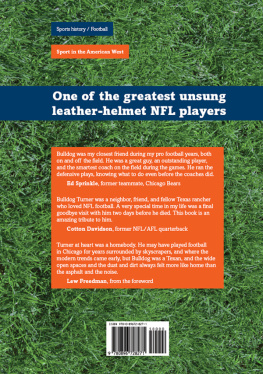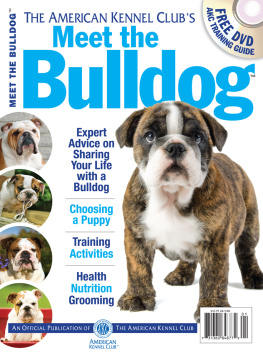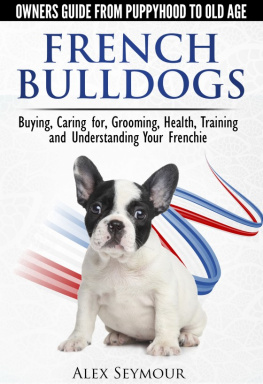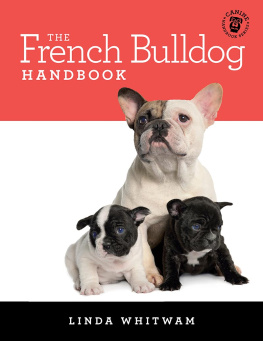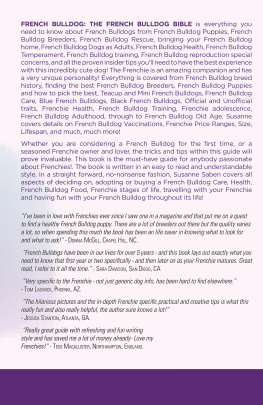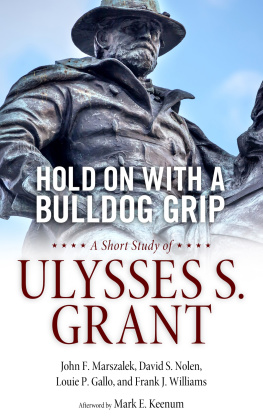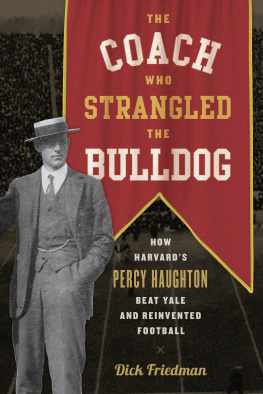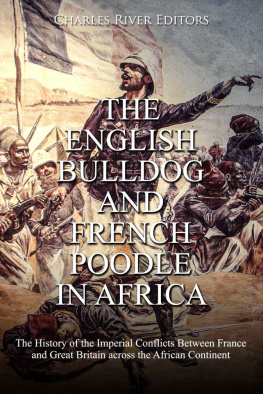Tony Read - The British Bulldog And His French Cousin
Here you can read online Tony Read - The British Bulldog And His French Cousin full text of the book (entire story) in english for free. Download pdf and epub, get meaning, cover and reviews about this ebook. year: 2011, publisher: Read Books Ltd., genre: Detective and thriller. Description of the work, (preface) as well as reviews are available. Best literature library LitArk.com created for fans of good reading and offers a wide selection of genres:
Romance novel
Science fiction
Adventure
Detective
Science
History
Home and family
Prose
Art
Politics
Computer
Non-fiction
Religion
Business
Children
Humor
Choose a favorite category and find really read worthwhile books. Enjoy immersion in the world of imagination, feel the emotions of the characters or learn something new for yourself, make an fascinating discovery.

- Book:The British Bulldog And His French Cousin
- Author:
- Publisher:Read Books Ltd.
- Genre:
- Year:2011
- Rating:5 / 5
- Favourites:Add to favourites
- Your mark:
- 100
- 1
- 2
- 3
- 4
- 5
The British Bulldog And His French Cousin: summary, description and annotation
We offer to read an annotation, description, summary or preface (depends on what the author of the book "The British Bulldog And His French Cousin" wrote himself). If you haven't found the necessary information about the book — write in the comments, we will try to find it.
Tony Read: author's other books
Who wrote The British Bulldog And His French Cousin? Find out the surname, the name of the author of the book and a list of all author's works by series.
The British Bulldog And His French Cousin — read online for free the complete book (whole text) full work
Below is the text of the book, divided by pages. System saving the place of the last page read, allows you to conveniently read the book "The British Bulldog And His French Cousin" online for free, without having to search again every time where you left off. Put a bookmark, and you can go to the page where you finished reading at any time.
Font size:
Interval:
Bookmark:
BULLDOG
AND HIS
FRENCH COUSIN
ORIGIN HISTORY
BREEDING SHOWING CARE

The Bulldog and Toy Bulldogs.
by
Rawdon Lee (1899)
by
St. John Cooper (1903)
by
St. John Cooper (1903)
by
F. W. Cousens (1907)
by
B. Marley (1907)
TIME is known to play grim jokes with historical monuments, but it probably has never burlesqued anything more than it has our national emblem, the British bulldog.
Evolved for a specific purposea purpose long since stamped out both by law and by sentimentthe present day examples can only be looked upon as the result of breeding for certain points not desired or found in any other kind of dog. That the bulldog can claim as great pretensions to antiquity as any other now so-called breeds is not to be denied; but to say that bulldogs are bred to-day on the same lines as they were even sixty years ago would be an assertion that could not by any evidence be defended.
Ancient writers have been quoted ad nauseam, but, interesting as these extracts may be as references to the early history of dogs in general, they bear no coherent testimony that the animals they refer to had more than a faint resemblance to the recognised type of bulldogs as living in 1898.

Evidence which is far more reliable is at our disposal in the pictures published towards the end of the last and the beginning of this centurythe epoch when bull-baiting was in vogueand, judging from these pictures, the bulldog of that time was but a phantom-like shadow of the animal the fin de sicle bulldog enthusiast has by patience succeeded in producing.
Thus to him who, nowadays, wishes either to breed or to own an up-to-date specimen, it will be so much useless and embarrassing learning if he hampers himself with any considerations as to the outline and general appearance of what has been handed down to him regarding the animals his ancestors looked up to as bulldogs. Should he decide upon breeding bulldogs he will find, in order to produce a specimen at all approaching the modern ideal, that, instead of wasting time in pondering over the old type, he will have to employ that particular style of dog which may at the moment be in fashion.
He need have no misapprehension that the type in general will in the future change much, if at all; nor need he fear that the goal he is striving for will be advanced. For it must be remembered that the standard laid down for this breed has not materially altered during the last twenty years, though judges decisions may have sometimes been at variance with, if not diametrically opposed thereto. The very fact of there being now two bulldog clubs is a guarantee that no radical change in the standard will ever be permitted, as one or other of the clubs is certain to hover round so safe an anchorage as an established type. If either club sanctions what sensible men must know is a departure from what is correct, it is only reasonable to suppose that in the fulness of time that club will sink in public estimation.
However, before going right into the description of what a modern bulldog ought to be, some few particulars of his early history may be desirable, and it is said that the first record of bulldogs in England was in 1631, when one Prestwich Eaton, from St. Sebastian, wrote to George Wellingham, of St. Swithins Lane, London, for a mastiff and two good bulldogs.
Bulldogs were ostensibly dogs for bull-baiting, and as this brutal diversion was known to be in vogue as early as 1209, consequently there must have been bulldogs then. Such animals as were used for actual work were quite unlike the modern manufactured article, which has undoubtedly suffered by the discontinuance of the amusement. There was no use for him with bulls, so he had to be bred for fancy purposes alone. Huge, broad heads became the rage, legs widely bowed were in favour, and from an active dog, that was able to seize a bull by the nose and keep his hold there, he has come to be what we see him now.
As the author of Modern Dogs I must write of them as they are at the present time, and, as an instance of the mischief of breeding for the exaggeration of certain points, reproduce the following account of a walking match between two crack bulldogs which took place in the summer of 1893. There had been a brindled dog shown with extraordinary success at that time, for which his owner, Mr. S. Woodiwiss, was reported to have given 250. In the opinion of many persons he was so much a cripple as to be unable to stand properly in the ring, which was a fact. However, the judges under whom the dog in question came, appeared blind to his defects, and time after time he was placed over more perfect animals. Then a match was made between Dockleaf, the dog alluded to, and another well-known prize-winning bulldog, called King Orry, owned by Mr. G. R. Murrell.
The novelty of the contest caused considerable interest to be taken therein, and it was arranged under the following conditions: Each dog to be led and make the best of the way from the Roebuck Hotel, Lewisham, to Bromley Town Hall and back, the distance being about ten miles. The competitors might have as much rest as appeared desirable, but lifting from the ground was disqualification. At seven oclock, when the start was made, a big crowd was in attendance, a portion of which accompanied the dogs on their journey. King Orry went off with the lead, and was nearly 400 yards ahead when a mile or more had been traversed. Soon after Dockleaf showed signs of fatigue, but continued on his journey to a couple of miles from the start, when, being fairly beaten, Mr. Woodiwiss withdrew him from further competition; his opponent was then far in front, and going well. Mr. Murrells dog, after a rest of seven minutes, arrived at Bromley Town Hall, and then set off on the return journey, Lewisham being duly reached at 9.25 p.m. Both animals had been in training for the match, and the winner showed no signs of distress after the accomplishment of what some modern admirers of the bulldog consider a great feat, but which we consider any bulldog ought to do equally satisfactorily. The loser occupied a trifle under forty minutes in covering his two miles, and, exclusive of stoppages, the winner progressed at the rate of some four and a half miles in the hour. Soon after this King Orry was sold to go to America, and in the same month, viz. July, 1894, Dockleaf, when less than four years old, died at Cardiff Show where he was being exhibiteda victim to the oppressive heat prevailing at that time.
Although all bulldogs are not so unable to walk at a fair pace as was the case with Dockleaf; still, he must be given as an example of the evil of breeding for certain exaggerations which nature could never have produced without human assistance, and to prove that an animal may win in the show ring and at the same time possess insufficient activity to preserve him in ordinary health.
Compare the above performance with what is said to have happened early in 1830, when, according to the Examiner, a gentleman living at East Grinstead had three bulldogs trained to draw a light four-wheeled cart. To this they were harnessed two in the shafts and one in front. On sundry occasions they brought their owner and his son into London at a smart pace of about seven miles an hour, though they could be taken as fast as ten miles an hour, and the usual time occupied in driving from his residence to Brighton, a distance of forty-eight miles, was six hours, and he had driven as much as fifty-two miles in one day. Perhaps, so far as actual bulldogs are concerned, this may be misleading, and I do not doubt that the dogs in question were strong bull mastiffsa cross by no means uncommon at that time. Still doubtless the bulldog of 1830 was a more active animal than the bulldog of 1898.
Font size:
Interval:
Bookmark:
Similar books «The British Bulldog And His French Cousin»
Look at similar books to The British Bulldog And His French Cousin. We have selected literature similar in name and meaning in the hope of providing readers with more options to find new, interesting, not yet read works.
Discussion, reviews of the book The British Bulldog And His French Cousin and just readers' own opinions. Leave your comments, write what you think about the work, its meaning or the main characters. Specify what exactly you liked and what you didn't like, and why you think so.


